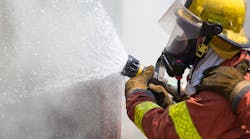How to gain control over your maintenance processes: Combating the Circle Of Fire
Plant Services Editor in Chief Thomas Wilk hatched a plan with George Williams and Joe Anderson to create a podcast series titled “Assets Anonymous.” The idea was for each monthly episode to address one aspect of how to gain better control over your maintenance processes and ultimately drive improved throughout and greater profitability.
All episodes are now available at www.plantservices.com/the-tool-belt, and this month’s cover story draws from each episode to deliver an extended sample of the advice shared by Joe and George. This is part two of our six-part series.
Step 3: The Circle Of Fire
GW: The Circle Of Fire is an analogy for the reactive state. Imagine this circle: we can't PM it because operations wouldn't give us the equipment, operations wouldn't give us the equipment because we're behind schedule, we're behind schedule because this conveyor failed earlier in the week, and the conveyor failed earlier in the week because we couldn't do the PM. Then the circle just keeps going and going, we couldn't do that PM because something else on the line wasn't right and they had to run a line, and we've got this continuous reactivity that takes place.
What is interesting to me is that the Circle Of Fire is made up of smaller circles. And so inside “why we didn't do the PM” is another circle. Why the conveyor breaks down is not only the PM wasn't appropriate, but we've got the wrong type of gearbox, we don't have a breather on it, we don't align things appropriately, the shaft has been bent for three years and the whole gearbox wobbles while the conveyor is going around.
Often the approach to trying to put out the fire is symptomatic. We throw a cup of water on it, but we can't do anything more than that because we have to go put out another fire. Someone has to make a fire go away and reduce its likelihood of coming back.
JA: We do that through a series of defect elimination techniques, but you have to understand, to get out of these cycles, there's other types of failures that have to become more important than the catastrophic failure. The potential to failures are your opportunity to address things at the cheapest possible point of overcoming a defect. You're looking at 10 to 40 times the cost to do maintenance in the catastrophically failed state versus, "I found a bearing defect, and I need to replace a $300 bearing." Understanding those types of failures and addressing them with as much urgency, if not more, as you would a catastrophic failure is how you start to break those little cycles down.
Step 4: Becoming a Fire Marshal
Can you talk about the two levels of what it means to become a fire marshal, and combat the Circle Of Fire?
GW: One is the advocacy piece, right? The “How do I engage with operations with senior leadership with...” and we're saying from the perspective of the maintenance manager, and even with the technicians, "How do I manage the change of looking at defects as early as possible to mitigate them before they become a risk to the business or even a catastrophic event that has a business impact?"
And then the other side of that is, "Well, what steps do I take as a fire marshal? How do I actually become one in terms of my actions? What do I have to do to mitigate defects as early as possible?"
JA: It's like eating an elephant with a spoon. You take one bite at a time, eventually you'll get through it. You take one problem and make it go away forever. Just one, right? But if you can do that every day, those things start adding up, and now a week later, you've put away five different problems. By the end of the year, all that really starts adding up and you start putting out these little circles of fire and you start to break that cycle. Now you can introduce a new cycle which is on the more proactive side of the scale, in which you're addressing issues before they lead to catastrophic failure.
This story originally appeared in the November/December 2022 issue of Plant Services. Subscribe to Plant Services here.
